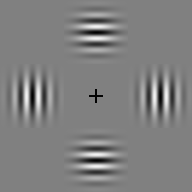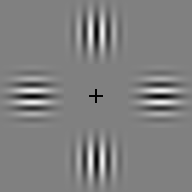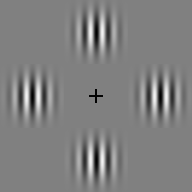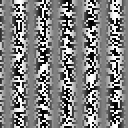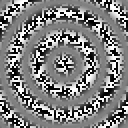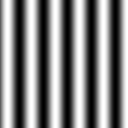

The radial motion and the leftward motion are physically equal in speed, but most observers say the radial motion appears to be faster. See: Bex, P. J., & Makous, W. (1997). Radial motion looks faster. Vision Research, 37, 3399-3405. We speculated there that the greater apparent speed of the radial motion is a consequence of a tendency for the visual system to interpret the radial pattern as motion in depth. Since then, Clifford, Beardsley, & Vaina (Clifford, C. W. G., Beardsley, S. A. & Vaina, L. M. (1999). The perception and discrimination of speed in complex motion. Vision Research 39, 2213-27) have reported evidence that supports this.
